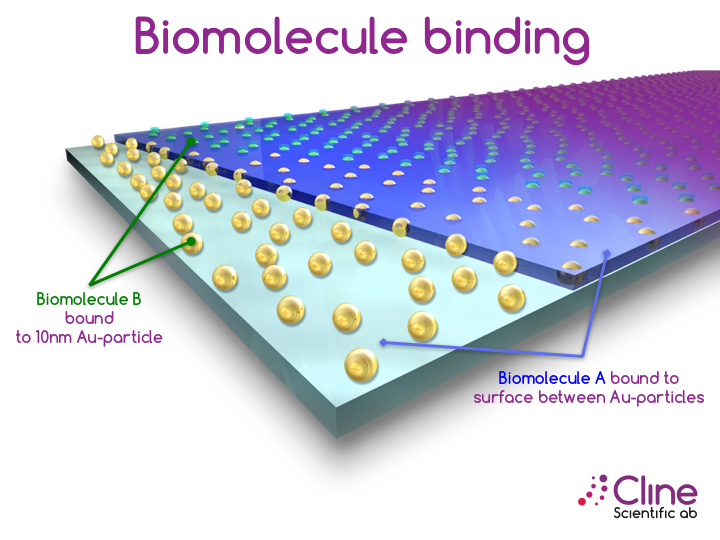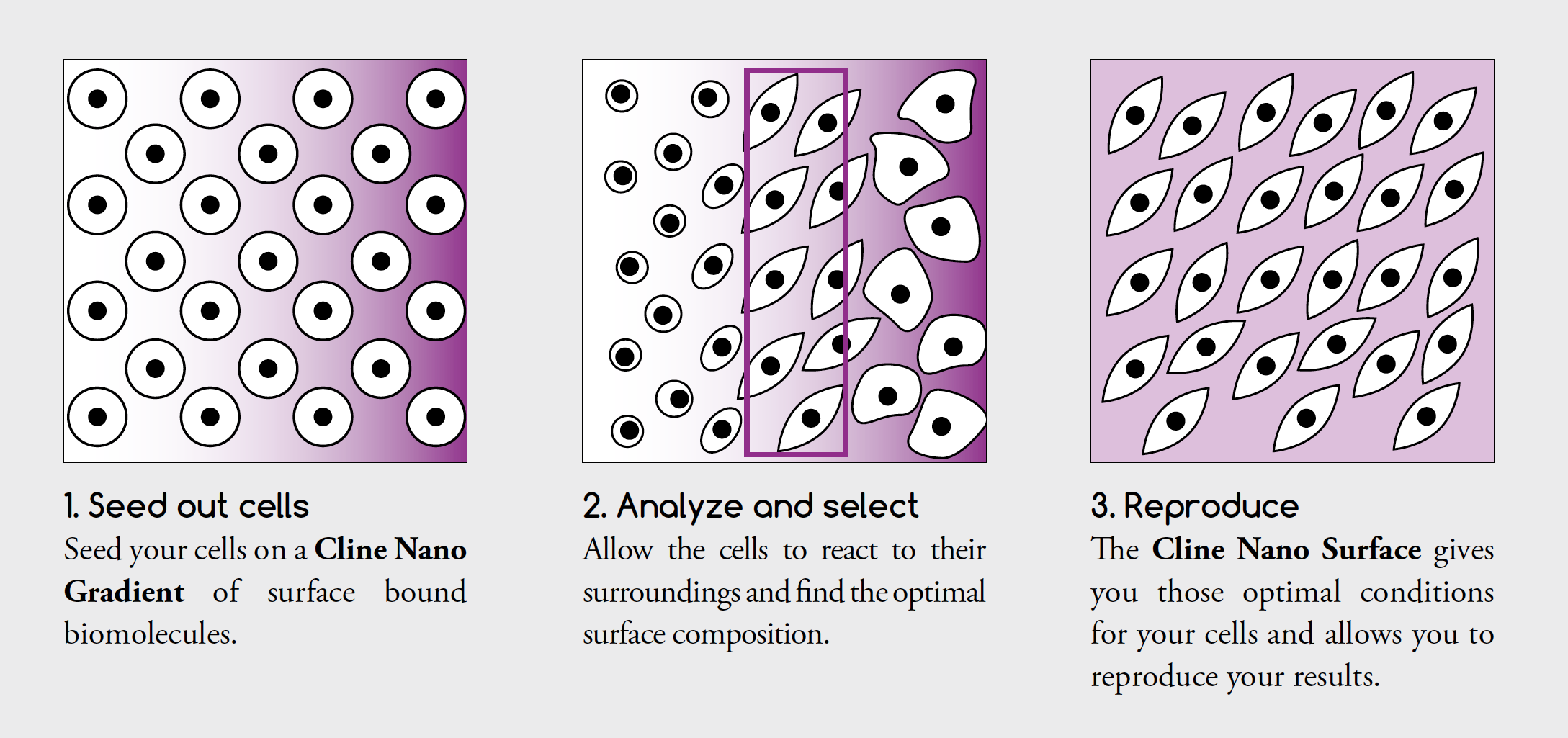
Optimize Stem Cell Differentiation in Less Time by Utilizing a Nano Gradient Surface
Optimizing stem cell differentiation typically means conducting many experiments to test and evaluate various combinations of biomolecules and their concentrations. At ISSCR this year, I was pleased to find an alternative that could greatly reduce the number of experiments needed to find optimal cell conditions. For the first time, I was introduced to Cline Scientific AB and their nano gradient surfaces. The Cline Nano Gradient surface consists of a density gradient of gold nanoparticles on glass surfaces. Modifying the gold nanoparticles and/or the surface between particles create gradients of desired biomolecules. Nano Gradient surfaces can be custom created with specific biomolecules, or there are several ready made options available as well.
How the Nano Gradient Surface Works
First Cline uses patented technology to cover surfaces with nano-sized particles in a density gradient. Then biomolecules are bound to the nanoparticle gradient. Biomolecules can also be bound to the surface between the particles to create desired gradient surface (Figure 1). Different surface patterns consisting of e.g. different ECM proteins and growth factors can be used to evaluate cell growth, differentiation and cell migration.
Figure 1:

Stem Cell Differentiation
While there are several possible applications for this unique technology, one that caught my attention was the ability to optimize stem cell differentiation in fewer experiments and with less time by using a nano gradient surface. The workflow for optimization is straightforward. Once a nano gradient surface of bound biomolecules is selected, cells are seeded. Next, cells begin to react to their environment and after analyzing cell responses; an area of the surface is selected as providing the best results. This area can then be duplicated onto a full nano surface, for reproduction of results.
Figure 2: Stem Cell Differentiation Workflow

The Cline Nano Gradient surface also provides excellent optical quality as they are created using transparent glass for high resolution images. The cells also adhere well to the surface due to a proprietary surface modification and the surfaces can also be customized even further to meet the needs of different cell lines.
Benefits:
- Safely select homogenous cell populations
- Screen for cell responses using a gradient
- More experiments done in less time
- Mimic in vivo tissue function
- Countless biomolecule combinations possible
- Fits most microscopes
- Molecular precision
Other Applications Include:
While we have presented one interesting application in this piece, there are several other possible applications for this technology. These include
- Evaluating ideal growing, expansion conditions
- Cancer research and cell migration
- Study of cancer metastasis
- Identifying cell budding initiation
To learn more about Cline’s nano gradient surfaces, please see: